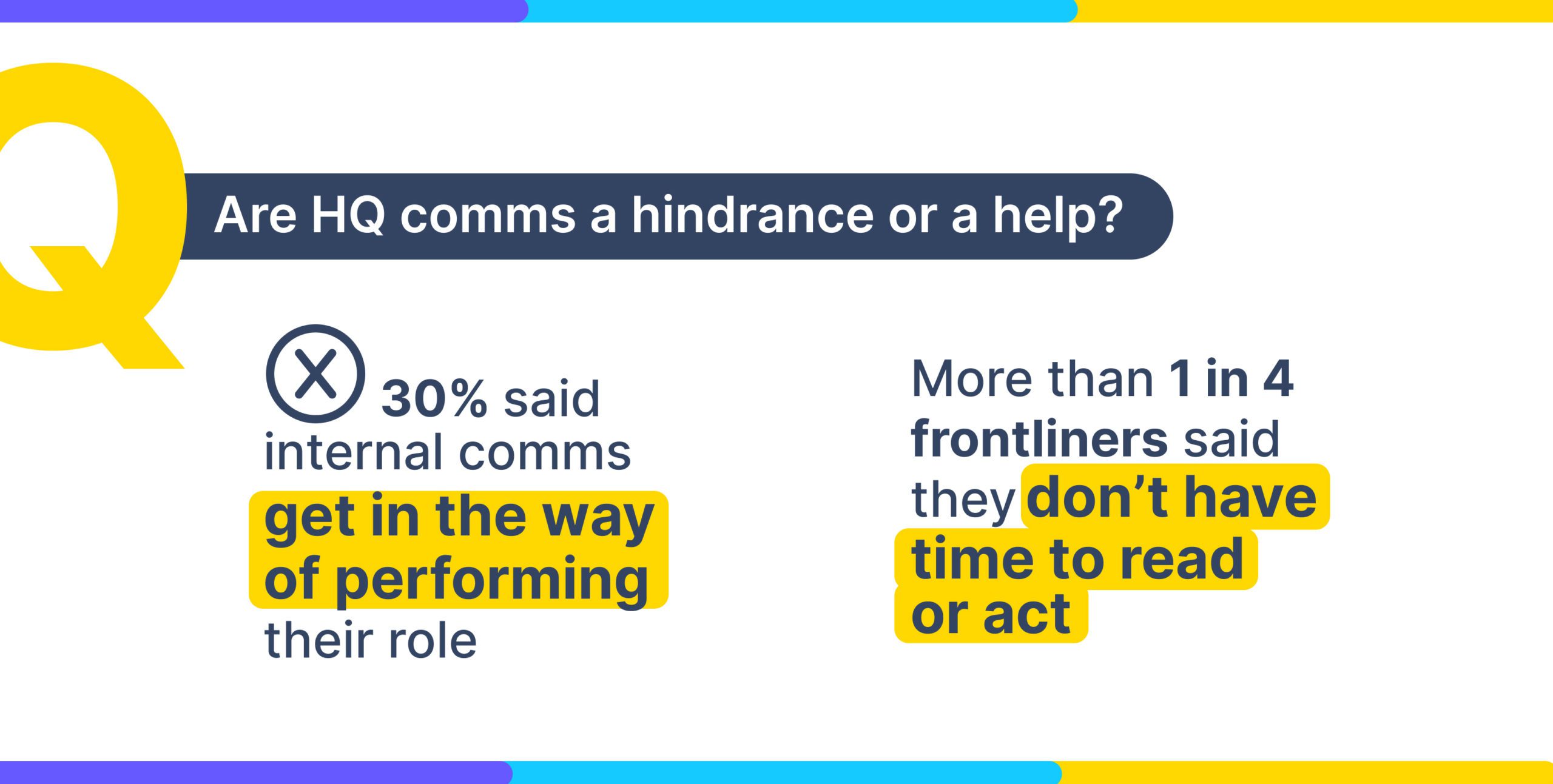The Science of Communication: Getting the formula just right
Feedback From The Field | Industry Trends | By | 22 Jul 2022 | 4 minute read

It’s almost impossible to read, absorb, understand and action all the information we encounter on a daily basis. In this era of information overload, communication is only getting tougher. In fast-paced or high-risk industries, getting information to workers on the frontline can be an even greater challenge. The science of communication tells us you can cut through all the noise and ensure your message gets across by using a simple, yet effective formula — the right message needs to get to your audience in the right way at the right time.
We break down how to reframe your communication strategy using this action-driven formula and finally reach those at the front line of your organization.
The Right Way
The key to ensuring employees are receiving and reading your internal communication is to keep it simple. Remember the days when workplace communication was kept to a single medium? Now workers are bombarded with messages from email, corporate messaging platforms, text messages (on both work and personal phones), internal company hosting websites, domains, and phone calls. It might be easy to manage all these modes of communication when you are working from a desk, but workers in the field don’t have the luxury of maintaining multiple open tabs. To cut down on all the noise and stress created by open-tab overload, choose a single platform or mode of communication and stick to it.
The Right Time
It is important to create a consistent schedule for communication that employees can learn to expect. This includes both the time of communications as well as the frequency. Recent research we conducted with YouGov revealed that 1 in 5 frontliners (21%) say context switching (“constantly switching between tasks”) stops them making fast and effective decisions at work*. A never-ending stream of alerts signaling new tasks, task changes and general team updates keeps workers from getting into “the zone” or reaching a flow state within their current focus.

Consistency within your organization’s communication schedule offers employees more autonomy over their day and ensures that emergency alerts are not overlooked. Frontliners who know to expect a message at the beginning of their workday will assume any messages coming outside of that time frame are urgent and can respond accordingly.
Once you’ve established a schedule, stick to it even when busy seasons arise or changes take place. Deskless workers don’t have the pulse on what is happening back at HQ if you don’t provide it.
The Right Message
Creating engaging content that your teams actually want to read is an important, but often overlooked part of all internal communication strategies. Frontline or deskless workers don’t receive the same “face time” that in-office employees receive. Company-wide and team-specific messages are a great opportunity to keep everyone feeling connected and begin building relationships within your organisation.
Here are some things to remember when crafting the perfect internal message:
- Make it engaging
Standard written emails feel dry, disconnected and boring. Long blocks of text cause eyes to glaze over and important information to be missed. Breaking up text with pictures, videos and infographics builds a richer, more enjoyable message that employees actually want to engage with. Use Canva, WordPress chart plugins, video editing and other tools to make your text and data more engaging and captivating. For a truly dynamic experience, consider using video collages that combine short clips, images, and text to create a visually compelling message. Additionally, using an image generator can provide you with stunning graphics that can elevate your video collages even more. You can even use an AI content writer to improve the copy of your drafts.
- Keep it relevant
The best way to make sure teams read your internal communications? Make it relevant to them! Remove any information that doesn’t pertain to the team or person the message is going to. You can utilize AI video maker tools to include job-specific tips or industry updates.
- Spice it up
All work and no play makes for a pretty boring day…and communication strategy! Here are some ways to spice up messages and keep deskless workers feeling connected to the culture of your company.
- Celebrate success with employee recognition
- Make it interactive with surveys and quizzes
- Create some friendly competition by including team performance stats
- Call out employee birthdays or exciting work and life milestones
- Highlight upcoming company-wide events
Remember, Communication is a Two-Way Street
Our research also revealed that more than 1 in 3 (40%) frontline workers believe the communication they get from HQ indicates to them that management is “out of touch” with their role. This type of disconnect and the feelings that follow occur when those at the top of an organization stop listening to and building relationships with employees. To remedy this, businesses must actively work to create a culture of open communication.
The best communication strategy is one that allows information to flow both ways. Utilizing tools like polls and surveys within your company-wide and team-specific messaging keeps employees engaged and allows everyone––especially those on the frontline, to feel as if their voice is being heard and their work is valued.
*About the research
All figures, unless otherwise stated, are from YouGov Plc. Total sample size was 1,980 adults (858 US, 553 Australia, 569 UK). Fieldwork was undertaken during April 2022. The survey was carried out online. The figures have been weighted and are representative of US, UK and AU frontline workers (aged 18+).
Important Notice
The information contained in this article is general in nature and you should consider whether the information is appropriate to your specific needs. Legal and other matters referred to in this article are based on our interpretation of laws existing at the time and should not be relied on in place of professional advice. We are not responsible for the content of any site owned by a third party that may be linked to this article. SafetyCulture disclaims all liability (except for any liability which by law cannot be excluded) for any error, inaccuracy, or omission from the information contained in this article, any site linked to this article, and any loss or damage suffered by any person directly or indirectly through relying on this information.





